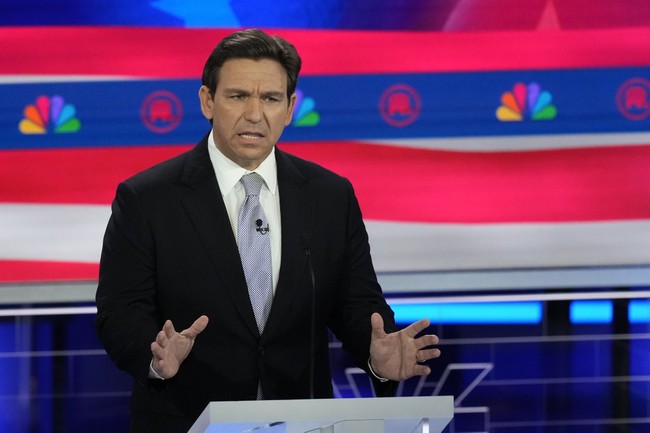
Rebuilding Efforts Will Stretch Into Future Years as Drought and Costs Weigh on Ranchers
A depleted cattle inventory in the United States herd has dropped to its lowest level in more than 70 years — creating an impact ever more visible each month in grocery stores.
Advertisement
Years of drought across ranch country pushed operations into liquidation mode, with many ranchers selling breeding cattle to survive short-term stress. According to Fox News, current herd totals resemble those of the early postwar periods in the 1950s.
Pressure From Drought And High Costs
What ranch operators have faced is a long series of difficult seasons. Dry ground has forced ranch families to buy additional feed or trim their herds.
Heat and low moisture on grazing land across broad sections of Texas, Oklahoma, Kansas, and the Mountain West are creating difficult times for cattle.
Agricultural economist Eric Belasco told Fox News that ranchers can't quickly reverse herd losses because of slow breeding cycles and limited supplies of replacement heifers.
Ranch operations that usually hold back female calves for future growth often sell those animals instead. Fewer replacement cattle create a multiyear rebuild cycle. Ranch families must grow heifers, breed them, wait for calves, and eventually raise those calves to market weight.
Every step stretches across seasons that can't be shortened.
High Demand Keeps Prices Up
Despite the cattle shortages, Americans keep buying beef at strong rates. Kansas State University economist Glynn Tonsor told Fox Business that families still choose beef despite cost pressures.
Advertisement
"There’s nothing that forces me or you or anybody else when we go into the grocery store to pay more for beef. People are choosing to," he said.
"The consumer desire for beef is strong and, regardless of the supply-side situation, that has the effect of pulling prices up."
From March through August of this year, retail prices climbed nearly 9%, placing average retail prices at roughly $9.18 per pound near the end of summer, almost a dollar higher than early spring.
Pairing sustained demand with tight supply keeps prices high. Ranchers, despite their best efforts, can't quickly increase production, while processors face short supplies of market-ready cattle.
Supply Chain Stress Builds
As fewer cattle arrive at weight, feedlots feel the crunch. Processors encounter tight schedules and higher input costs. Earlier this year, primary meatpacking operations signaled warnings about shrinking supply and increased pressure on plant margins.
Several operations across the High Plains and Midwest have shown that cattle supplies remain far too low to support full production schedules. Any long-term rebound must begin with larger cow herds, which take years to develop.
How Ethanol Policy Pushes Feed Costs Higher
Adding steady pressure to cattle operations are federal ethanol policies. Large volumes of corn are used to produce fuel under the Renewable Fuel Standard and related subsidy programs.
Advertisement
When demand for corn increases, it drives up the feed prices for ranchers and feedlots. Economists across the USDA and land-grant universities estimate that fuel-ethanol demand lifts long-term corn prices by a significant margin.
When the corn isn't as available for feed, it often forces ranchers to liquidate cows during difficult years, slowing any herd recovery that follows.
Removing corn subsidies would return more corn to the feed market, reduce input costs, and shorten the rebuilding timeline. However, drought, labor shortages, and land costs still shape the final price that families pay for their beef.
A Rebuild On A Slow Clock
Who knows the cattle cycle better than anyone? Ranch families. Expanding the herd never moves at the pace of public demand; every setback caused by drought or high feed prices takes years to correct.
National numbers currently reflect not only weather-related struggles, but also demographic pressure — many ranch operators carry decades of work on their shoulders. An aging ranching population often can't absorb multiple seasons of high costs without selling off breeding stock.
Economists warn that consumers may feel the effects of small herds for several more years; rebound efforts need reliable moisture, lower feed prices, and steady calf retention.
Advertisement
None of these puzzle pieces forms quickly.
Final Thoughts
This drop of American cattle herds didn't fall to a 70-year low overnight, and recovery won't unfold on a convenient timeline. Ranch operators carry forward after years of dry grazing, expensive feed, and economic stress. Strong demand for beef adds yet another layer of pressure, leaving families across the country to pay higher prices at butcher counters and grocery stores.
Unfortunately, higher beef prices will remain a permanent fixture of the current landscape until ranchers can rebuild herds and renew pasturelands.
Inside the Country’s Food-Supply Strain
Get deeper analysis across agriculture, economics, and national supply networks with PJ Media VIP.
Join now for expanded briefings and expert coverage that goes far beyond standard reporting.











